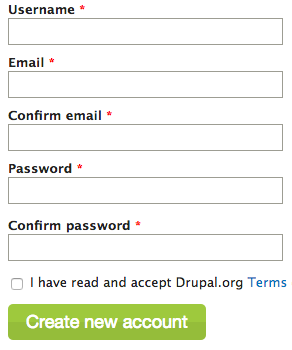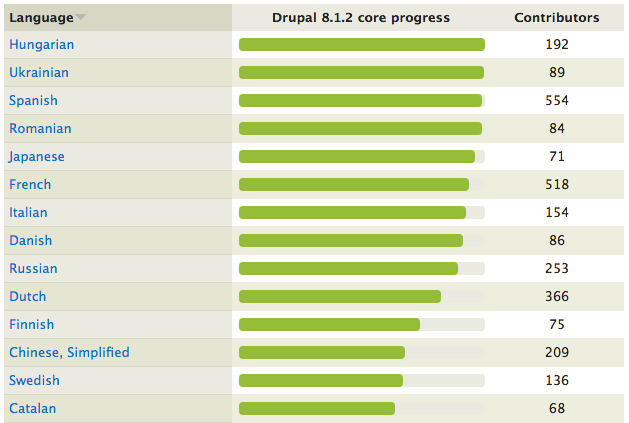By contributing translations to Drupal.org we are doing our part to help the community to use it in different languages, which ultimately benefits many people who do not have the slightest command of the English language.
If you want to start contributing translations to Drupal.org and help the community, you just have to follow these three simple steps:
1. Registration
By being registered with Drupal.org, we will be able to contribute, import or export translations from a specific language.
To register we enter the following link: https://www.drupal.org/user/register

2. Language
Once we have logged in, at the link https://localize.drupal.org we will see a list with the translation status of the most recent version by language. In this part we will choose the language or translation team to which we are going to contribute.

3. Start contributing
Now, the step we were waiting for.
Once the language has been chosen, we can begin to contribute translations. By default, the CORE of the latest version of Drupal is already indicated in the filtering form, showing all the text strings that remain to be translated.
On the right side of each text string we can see a textarea field in which we will put the translation of said string.

After verifying that the translation is correct, we click on the save changes button at the bottom of the page… and that's it ª\(º∪º).
You may wonder why, despite having made the translation, it still does not appear among the official translations. The reason is that behind it there is a team of enthusiasts who will be in charge of validating the translation and if everything is fine you will soon see the translation available.
Translations through the Localization client module
Apart from contributing translations directly from the drupal.org website, we can also do so directly from the site we are developing with the following module:
Localization client: This is a contributed module so you have to download it directly from the page
https://www.drupal.org/project/l10n_client
and install it. This module helps us to easily identify untranslated text strings both on the current page and in the CORE modules and in the contributed modules. If the module is configured correctly, the translations made on it will be presented to the community.
Once the “Localization client” module is installed, a button will appear at the bottom right of the page where we will see three fields:
-
Page text
-
Origin
-
Translation into Spanish

In the “Page text” field you will see a list with a summary of the different text strings on the page, in the “Origin” field you will see the complete text string, and in the “Spanish translation” field ” the translation will be made to said text string.
Conclusion.
We learned step by step two ways to contribute translations to the Drupal community using the “Localization client” module and directly from the Drupal.org page.
